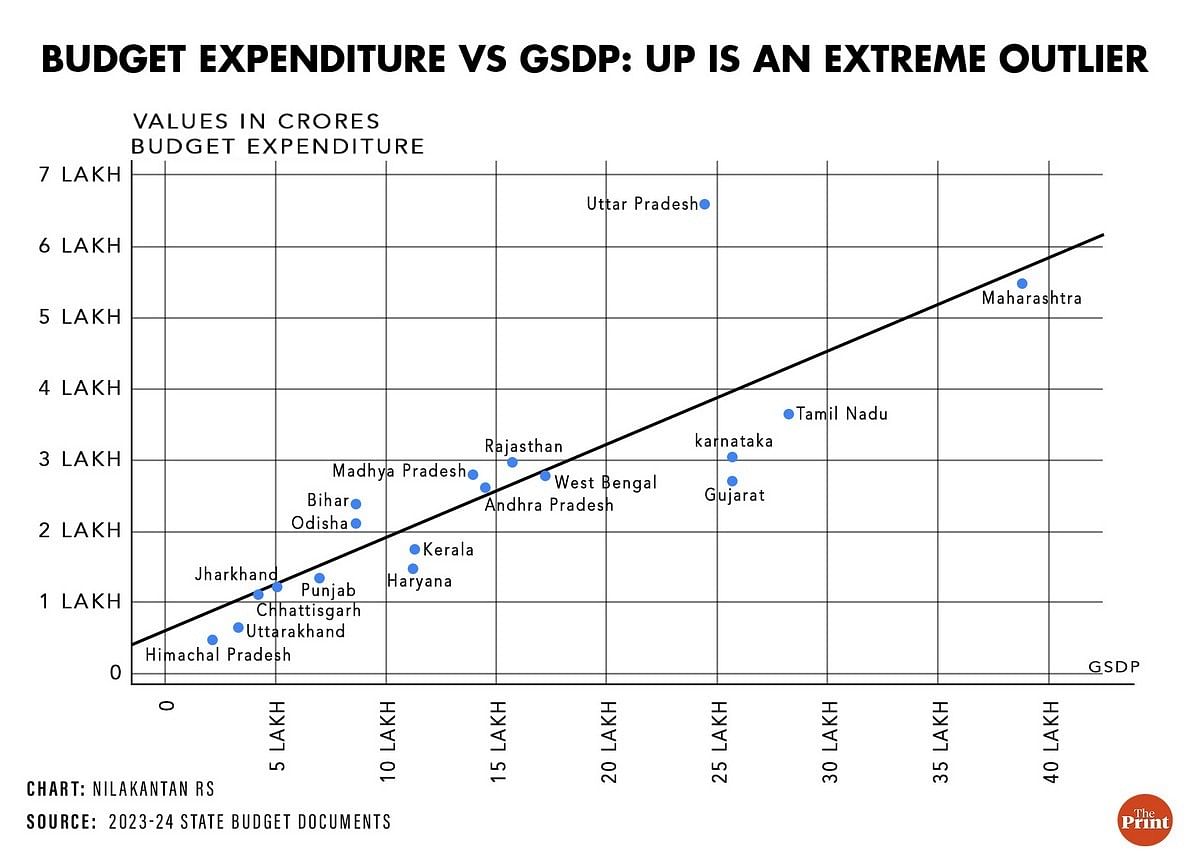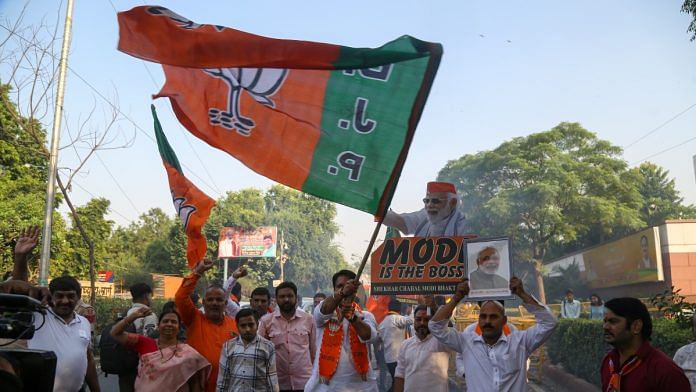The BJP’s unlikely victory in the Haryana Assembly elections isn’t just about how pollsters and Congress strategists got it wrong. These election results were, in fact, crucial to the politics of fiscal federalism in India.
Haryana is one of the states I call “giver states” because of how much it contributes to the Union. It is always important that national parties—the BJP and Congress—have a strong stake in both rich and poor states. It makes fiscal union work better. The other giver state that the BJP rules right now is Gujarat. I call Maharashtra a neutral state, as can be seen in the chart below.
The chart shows how much each state spends in its budget, measured against its GSDP. The states that fall below the regression line in this chart transfer funds to the Union and other states. They do this by living well within their means, in some ways. Those that are above the line receive money from the Union—which includes money from other states—to support their budgets.

The distance of each state—represented by a dot on the chart—from the regression line, when it’s below the line, measures the degree of ‘giving’. Five states are significant givers to the Union: Haryana, Kerala, Gujarat, Karnataka, and Tamil Nadu. Maharashtra, which is a massive and prosperous state, gives a lot. But it also gets back a significant chunk, making its residual much smaller than the others. For the purpose of this analysis, the state is largely neutral.
Also read: Nayab Saini is behind BJP’s win in Haryana. He started as an assistant in party’s office
A balancing act
India’s story in the last couple of decades has been one of divergence between the rich and poor states. The transfer of resources from rich to poor states in India is unlike that in other countries. In most federal unions, the richer states also happen to be the more populous ones with a higher population growth. India, however, has a unique problem: Its poorer states are far more populous while the richer states are in general smaller and have a slower population growth rate.
The poor states—especially populous ones that have a large positive residual, meaning they take a lot of money in from the other states—happen to be Uttar Pradesh, Madhya Pradesh, Rajasthan, Bihar, and Odisha. It doesn’t take a political genius to figure that these five states happen to have governments headed by the BJP or its allies. The Union government, which can tip the scales when it comes to these transfers, is also formed by the same party.
It is natural for impoverished states to seek more funds and higher transfers. It is a just demand as they have a lot more needs to meet. In our system of government, the political party in power in those states is the vessel through which that demand can be routed. However, given the BJP’s control of the top five “taker” states, the question then becomes, will the party bat for a greater transfer of resources with no regard for fairness toward the giver states?
One way to balance this dynamic is for the national political parties to have constituencies in both sets of states. Haryana, which is a rich state, is therefore crucial for the BJP to maintain internal balance. Gujarat is the only other giver state with a BJP government.
In a political landscape where the rich and poor states are represented by different political parties—none of which have a stake in the other type of state or the party in power there—the Union becomes volatile. In such a scenario, the incentives of each party and state are aligned toward confrontation. A mix of constituencies for each national party moderates that problem.
If Haryana had gone the Congress way, the BJP would have had power only in Gujarat, among the rich states. The latter is a state the party takes for granted. What we need for a stronger and fairer Union is for both national parties to win across the rich state/poor state divide equally so they aren’t swayed by any one side. Hopefully, the voters in Uttar Pradesh and Bihar, when they vote next, will choose the opposite of what voters in Haryana have.
Nilakantan RS is a data scientist and the author of ‘South vs North: India’s Great Divide’. He tweets @puram_politics. Views are personal.
(Edited by Prasanna Bachchhav)




